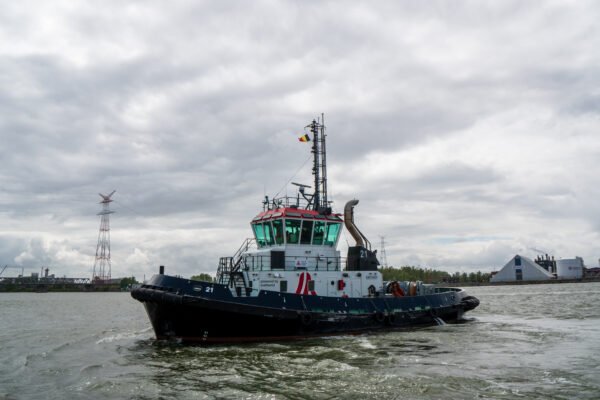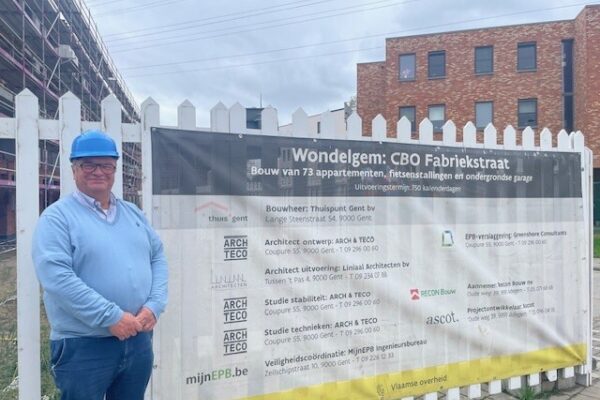Refits for luxury yachts | MULTI.engineering

Refits for luxury yachts: Matthew McDonald and Siem-Jan Lievense take us behind the scenes
Refitting a yacht comes in many different shapes and forms. Some like to simply update the existing technical facilities, others want to modernize the yacht, and some people will even change the lay-out entirely and extend it. In this double interview, Matthew McDonald, Team Leader at our Design & Engineering office, and Siem-Jan Lievense, Lead Engineer at our Vlissingen office, tell us in detail about MULTI.engineering’s approach to refitting luxury yachts.
What are the most common questions related to refits for yachts?
Matthew: “One of the most common question is whether a project should be considered a refit or a rebuild. Often, what once started as a refit ends up being a complete rebuild, so sometimes it’s challenging to draw the line here.”
Siem-Jan: “Exactly. A refit goes beyond a fresh coat of paint; we are often inquired to modernise the ship, update the technical facilities, or change the lay-out entirely. It goes without saying that in these cases, it’s not easy to distinguish a refit from a rebuild, as the requirements for both procedures tend to overlap. Think of a refit as an update of the existing infrastructure of the ship, whereas a rebuild is comparable to a home renovation; we strip the ship completely until we’re left with its ‘shell’, and rebuild it from there.”
“One of the biggest challenges for refits is for us to draw a clear line between what classifies as a refit, and what should be considered a rebuild, as the requirements for both procedures tend to overlap.”
- Matthew McDonald
Can you give us an example of an exceptional modification?
Matthew: “I recently spent almost three and a half years working on a refit where my engineering work was originally intended to last between eight months and one year. One of the main adaptions requested by the client was to extend the vessel by 10 meters. But by the end of the project, we’d almost forgotten about the extension as the additional requirements took up way more of our time.
Other exceptional changes are completely renewing and redesigning the interior, adding swimming pools or jacuzzis and making the vessel more environmentally friendly.
Siem-Jan: “I worked on a similar project – an extension of a ship – for about nine months. Apart from the extension, the lay-out of the superstructure was changed as well with the addition of guest suites and balconies and the lengthening of a superstructure deck.
Another example of an exceptional modification would be when a client asks us to convert a different type of vessel to a yacht. Often, we only discover what needs to happen when we’re already knee-deep into the project, so we need to make additional changes to the systems as we go.”
“Often, we only discover which adjustments need to be made to the structure of the ship when we’re already knee-deep into the project, and need to make additional changes to the systems as we go.”
- Siem-Jan Lievense, Lead Engineer
What is the main difference between a refit and a new build from an engineering perspective?
Matthew: “In general the time and cost of the project is the main difference. From an engineering perspective the entire process can be different. For new builds, the various steps of our work process are clearly defined: first comes the engineering, then production, then interiors, etc. Refits demand a more hands-on approach where production is involved directly and in engineering we sometimes need to adjust our documents based on feedback from the situation on board. As you can imagine, the engineering part of the job can also become more complicated when a refit project gradually evolves into a rebuild project due to multiple additional changes. When engineering piping & ventilation systems on a refit it can also be more complicated due to the restrictions when trying not to impact existing items. Compare this to a new build: the space for piping is determined, but we can continue to move things around to make the optimal arrangement for the systems. We don’t have the same amount of freedom during a refit as we want to stay within the scope of the agreed changes.”
Siem-Jan: “The engineering for new build is indeed more structured to bring to life than refits, given the many restrictions. Plus, with a new build, you can always ask around why something is being built a certain way. When you have to figure this out from older drawings, or from the as-built situation of an already existing ship, things get more complicated.”
Which steps should be considered to ensure the refit is off to a good start?
Matthew: “It is of utmost importance to make precise agreements with the client, to draw the line between a refit and a rebuild, and to communicate well internally with our team. Setting up a qualitative engineering process is extremely difficult if we don’t have a clear grasp on what the complete work package entails.”
Siem-Jan: “Precisely. Piggybacking off what Matthew said about clear communication within the team, I’d like to add that we meet with the entire team, to ensure everyone knows what everyone is working on. If engineering does not know what production is doing, or vice versa, the possibility of making mistakes is increased. Having insight into what each department is focusing on, makes the whole process much smoother and more effective.”
How do you go about planning and managing a refit project?
Matthew: “As we’ve established before, making an adequate estimation is more complicated for refit projects than it is for a new build. Unforeseen circumstances largely impact our planning and needed resources. Therefore daily catch-up meetings with all stakeholders are a great added value.”
Siem-Jan: “Yes, and I would add that it is crucial for all the departments to be aligned. The production team can already start working while engineering is still at the drawing board, so clear communication is essential. Keep in mind that each department has its own deadlines, so we always want to ensure everyone can meet those and we don’t leave our colleagues and subcontractors in the dark if there’s a hold-up in another department. Luckily, working with 3D models simplifies our workflow and enables us to deliver qualitative projects in a timely manner.”
What’s an example of unforeseen circumstances you’ve encountered during the engineering process?
Matthew: “Without a doubt the additional changes. Whether we discover differences between the drawings and the actual situation on board or decided to replace parts of the ship that we hadn’t calculated into the original plan; refits tend to evolve constantly. Another challenge would be the deadlines. Because much more activities run at the same time and in smaller areas, planning is far more complicated. Occasionally, because of the heavy workload, there can be work carried out on board that is not always communicated back to engineering, making it harder for us to maintain the overview.”
Siem-Jan: “I agree. More than in a new build project for a refit project you are part of the purchase process and discussing with subcontractors about the equipment on how to fit the equipment into the space that is available. Needless to say, it’s beneficial for the whole team and the final results if we can be flexible on the job.”
What kind of technology helps you improve the accuracy of the engineering process for a refit?
Matthew: “The scanning equipment. The more precise these scans are, the more seamless the engineering process will be. Lately, there have been interesting developments with Augmented Reality as well. It’s something we’re investigating at the moment. We’d love to integrate AR as part of our workflow, so it’s almost as if we are walking around the ship and can see which adjustments need to be made to its structure. By overlaying a 3D viewer program on the real-time situation of the ship, we’d be able to quickly detect blind spots in the engineering process and adjust accordingly. In my opinion, this would be interesting to implement for big refits especially.”



